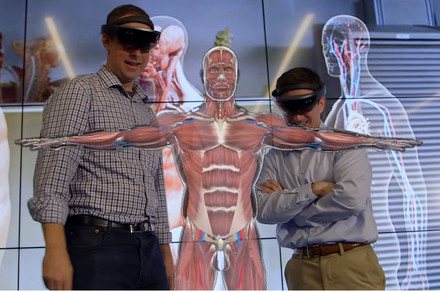Why it matters to you
Stryker’s use of Microsoft’s HoloLens AR solution could lead to more flexible, functional operating rooms in the future.
Augmented reality has a number of increasingly important applications in a variety of industries, from engineering to retail to interior design. One of the most exciting applications of AR, and the one that promises perhaps the most immediate impact on our lives, is in medicine, where AR can help educate, diagnose, and even treat disease in new and innovative ways.
Microsoft’s HoloLens AR solution is perhaps the most advanced today in terms of becoming a part of the real world, even while it’s not yet a retail option aimed at consumers. Global medical technology company Stryker, which is using HoloLens to redesign the operating room, provides a clear example of the potential of AR in this setting.
More: Hololens being adopted as visualization aid for spinal surgery
Anyone who’s ever worked in an OR knows how complicated they can be. Because they’re used for all kinds of different surgical disciplines, from general surgery to orthopedic, cardiac, and others, the equipment and setup required to meet every need can become incredibly complex and varied. Lighting, tools, equipment, and how patients are oriented in the OR space must be capable of changing at a moment’s notice to accommodate different kinds of surgical procedures.
As a maker of all kinds of products used in the operating room, Stryker has a vested interest in helping hospitals and doctors design efficient and cost-effective surgical suites. The company is using HoloLens to design shared OR rooms that can use holograms to account for all of the people, equipment, and setups imaginable without needing to pull in actual physical examples.
That potentially saves time and money and allows Stryker to more quickly and effectively envision different OR scenarios. Stryker can also utilize 3D to more realistically visualize a finished design and reduce the design errors introduced by much more limited 2D representations.
[youtube https://www.youtube.com/watch?v=SKpKlh1-en0?feature=oembed&w=100&h=100]
Other organizations are using HoloLens to affect the future of medicine, such as Case Western Reserve University and the Cleveland Clinic, which are using Microsoft’s AR solution to better understand and teach human anatomy. Ultimately, it’s likely that one of the first areas where HoloLens and AR in general will make the most impact is in medicine, regardless of how quickly the technology rolls out to consumer applications.

